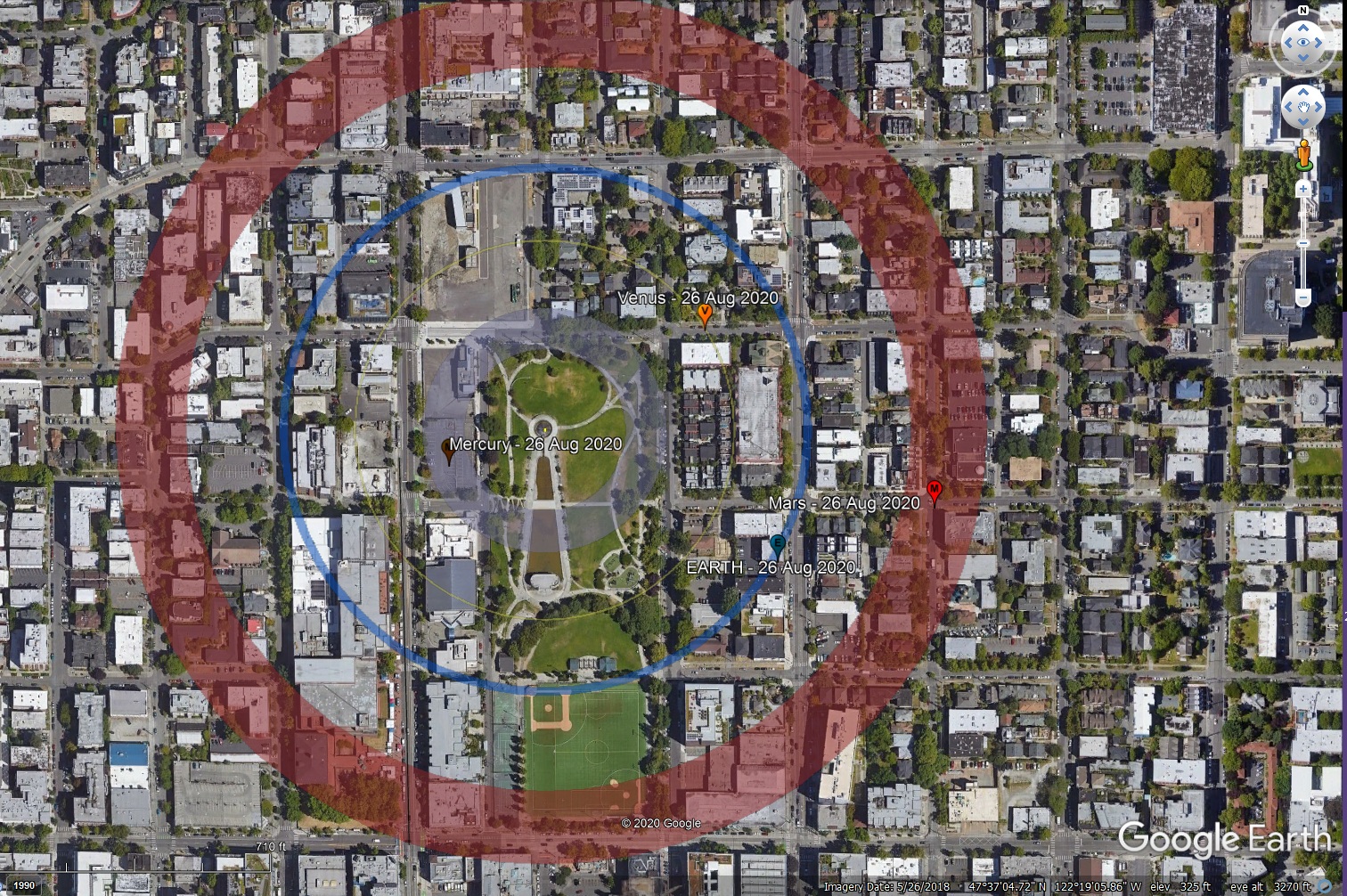| back to mrk.land | |
|
When i was in Munich i went to the science museum.
In the middle of the courtyard they had a scale model of the Sun.
Then in the archway leaving the courtyard was a pea-like model of the planet Mercury.
Out front on the foot bridge over the river was a tiny Venus
and a few meters down the bike path on the other side of the river was Earth.
Then it was a good long walk down the riverside path to the gas giants.
Neptune was at the zoo, over an hour's walk away. (And the comet we call Pluto was even farther.)
It was great fun.
I have always loved Solar System Models. They are a great way to learn the scale of our solar system. I've often sketched out potential models on maps of where i live and dreamed of building one! But there is a problem with models like this. The are linear. The solar system is not linear! In fact, a quick calculation of the probability of all 8 planets lining up suggests that it would happen once in 30 billion years, and since last time i checked, the solar system was 4.5 billion years old and it will only live another 4 billion years, there's only about a 15% chance a direct line will ever happen!! At any given moment the planets are spread out seemingly chaotically around the solar system. But we have the ability to plot that on a map too! If i had the resources i would love to build an app that would do this for any point you choose. I can't do that, but i can do some math. |
What i wanted was a map based orrery, a model of the positions of the planets
today superimposed on a map.
So i worked up some lengthy calculations using multiple datasets, different
pieces of software and even, at one point, a good old fashioned protractor.
I had to do it several times until i found a scale that i felt was walkable. The trick was balancing a frustratingly quick tour of the inner planets (about 3 minutes in a 2.5km radius model) with an exceptionally long walk to the ice giants (about 11 hours in a 10km radius model). A 6km radius of Neptune's orbit seemed to be the happy medium. Once i had the planets plotted out on the map (first image), i laid out a walking route (second image). Actually it was two routes because i wound up walking to Uranus the next day. (I'll need a boat for Neptune, it's that green dot in the middle of Lake Washington south of Medina.) I calculated that to visit 7 planets (at 6km radius) i walked 38 billion space miles -- or about a million miles per step! This layout of planets would change from day to day. Mercury orbits in 88 days so it moves a city block on this map every 2 or 3 weeks, while Neptune orbiting in 165 years has much more distance to cover! The walk was great fun and a wonderful insight into planetary relationships, in fact, it helped me understand this year's (2020) great conjunction! |
| click images to enbiggen | |
 |
 |